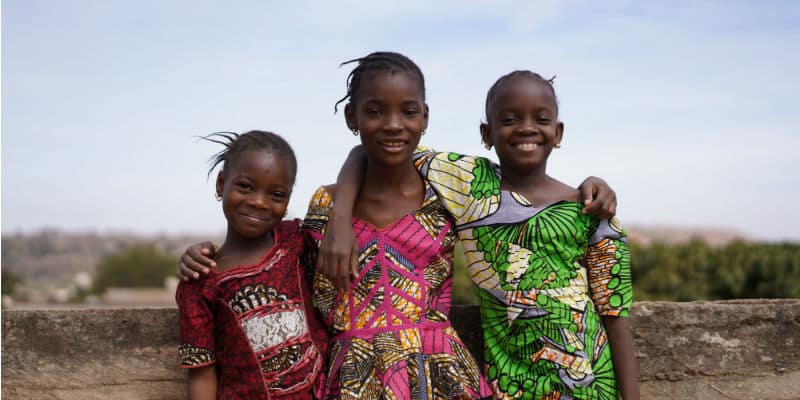As the youngest continent on the planet, Africa is at a major crossroads. The number of young people who will reach working age over the next 15 years is estimated at 450 million, yet, at its current trajectory, the continent is expected to create just 100 million jobs by 2035. If young people are denied the opportunity to get ahead, this may ultimately become a demographic disaster. The good news is that smart investments in innovation can course-correct the continent’s current trajectory.
| Continent | Median age |
| Africa | 19.7 |
| Asia | 32 |
| South America | 32 |
| Oceania | 32.7 |
| North America | 38.6 |
| Europe | 41.7 |
Take the United Arab Emirates’ recent pledge to invest $500 million to boost Africa’s digital economy and support programs targeted at improving the lives of the continent’s growing youth population. Perhaps more important than the amount of money UAE will invest is the strategic manner in which the country plans to invest it. Reem Al Hashimy, Minister of State for International Cooperation, described UAE’s strategy as one that’s focused on developing the continent’s human capital through entrepreneurship. She noted, “More than simply a donor or a provider of concessionary loans, the UAE understands that real value lies in the long-term building of human capital.” She later stated that the UAE is “committed to helping deliver the apparatus in which start-ups can thrive, entrepreneurs can lead and young people can look forward with optimism to a future that is firmly in their control.” The significance of this investment cannot be overstated.
This isn’t the first time the UAE has offered significant aid to Africa; from 2014 to 2018, the country provided close to $17 billion in aid. In fact, the country consistently surpasses the United Nations target by giving more than 0.7% of its Gross National Income. But its latest pledge is different—this time, it’s targeted at developing Africa’s capacity to innovate.
A strategy grounded in innovation theory
In The Prosperity Paradox: How Innovation Can Lift Nations Out of Poverty, we explain that not all innovation is created equal, especially in terms of its impact on the development of a region. For this investment to have the most impact, it must prioritize supporting market-creating innovations, which generate immense economic activity and create far more jobs than other types of innovation.
Market-creating innovations target nonconsumers—the segment of the population who would benefit by owning or using a product but cannot because it’s too expensive, complex, or inaccessible. The way they do that is by transforming complex and expensive products, like expensive insurance products, into simple and more affordable ones, making them accessible to a much wider segment of the population. It’s important to note that the impact of these powerful innovations far exceeds that of the original innovator; as other innovators realize they too can target this vast new market with complementary innovations, many more people are hired to make, market, and distribute the products and services. A perfect example of a market-creating innovator that’s leveraging technology is MicroEnsure.
The innovative insurance company has developed a unique business model for providing insurance to tens of millions of nonconsumers of insurance for “free”. By partnering with mobile telecommunications providers and reinsurance companies, MicroEnsure is able to provide people who make less than $5 a day with free insurance by topping up their mobile minutes. If customers top up over a certain amount, they are eligible for different insurance products. The company now boasts close to 90 million customers in Africa and Asia. And to serve this enormous new market, MicroEnsure and other organizations have had to create many new jobs.
When MicroEnsure signs up a new health insurance customer, for instance, that simple act has ripple effects in the economy. When the customer files a claim, an employee must respond to it. When access to health insurance leads to more hospital visits, the hospitals must hire more people to meet the demand. The ripple effects of market-creating innovations are vast when it comes to job creation and development outcomes.
Of course MicroEnsure isn’t the only company using digitalization to improve lives and deliver services to millions of African nonconsumers. Recognizing the need for increased financial literacy as more companies develop fintech solutions for African nonconsumers of financial services, Fineazy is solving the problem by leveraging artificial intelligence and mobile phones. Similarly, in places where transportation has historically been expensive or inaccessible, Lula is targeting nonconsumers of transportation with a mobile-enabled service that connects corporate commuters to private shuttles. Its solution is more than 30% less expensive than Uber’s for the same route. As demand for simpler, less expensive, and more accessible solutions like these expand, not only will more people be hired, but it’ll also lead to more economic activity.
There are countless other African innovators developing digital solutions to create new markets on the continent. If the UAE program focuses on empowering more African entrepreneurs with the knowledge and expertise to target nonconsumption, its investment has the potential to have an exponential impact on Africa’s development, and ultimately ignite hope in hundreds of millions of young Africans. In this way, this small country of 9.4 million could impact this big continent of 1.3 billion… and counting.



